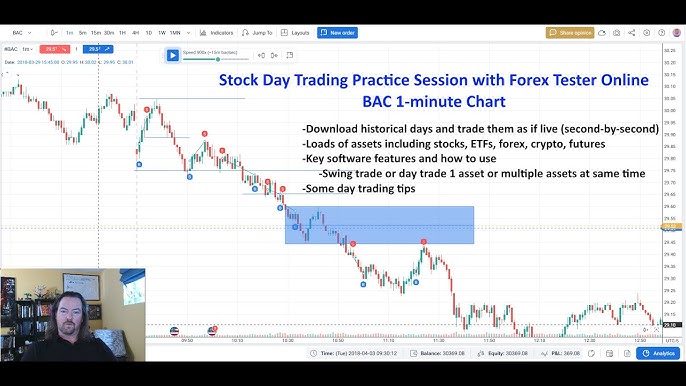Did you know that the average day trader spends more time analyzing charts than a chef spends perfecting their soufflé? In the fast-paced world of day trading, having the right charting tools can make all the difference. This article delves into the best charting tools for day traders, how to select one that suits your trading style, and essential features to look for. We’ll explore the benefits of real-time charting, customization options, and how to interpret candlestick patterns effectively. Whether you’re considering free or paid platforms, or need tips on mobile charting apps, we’ve got you covered. Join us at DayTradingBusiness as we empower your trading strategies through effective charting tools!
What are the best charting tools for day traders?
The best charting tools for day traders include:
1. TradingView: Offers advanced charting features, social networking, and a wide range of indicators.
2. MetaTrader 4/5: Popular for Forex and stocks, featuring customizable charts and automated trading options.
3. Thinkorswim: A robust platform by TD Ameritrade with powerful charting capabilities and real-time data.
4. NinjaTrader: Excellent for futures and Forex, providing advanced charting and backtesting tools.
5. eSignal: Professional-grade charts with extensive technical analysis tools and real-time data feeds.
Choose based on your trading style, asset class, and specific needs.
How do I choose the right charting tool for my trading style?
To choose the right charting tool for day trading, consider these factors:
1. User Interface: Look for a clean, intuitive design that fits your workflow.
2. Chart Types: Ensure it offers various chart types like candlestick, line, and bar charts for different analyses.
3. Technical Indicators: Check for essential indicators like moving averages, RSI, and MACD that align with your trading strategy.
4. Customization: The ability to customize charts and indicators is crucial for tailoring your analysis.
5. Speed and Performance: Choose a tool with fast loading times and real-time data to make timely trading decisions.
6. Integration: Ensure it integrates with your brokerage for seamless trading execution.
7. Cost: Evaluate pricing options, including free trials and subscription models, to find one that fits your budget.
Test a few tools to see which one resonates with your trading style.
What features should I look for in day trading charting software?
Look for real-time data updates, customizable chart types, and technical indicators. Ensure it offers advanced charting tools like trend lines and Fibonacci retracements. A user-friendly interface is crucial for quick analysis. Check for features like multi-timeframe analysis and alerts for price movements. Integration with trading platforms and mobile access can enhance your trading experience. Finally, consider backtesting capabilities to refine your strategies.
How do charting tools improve day trading strategies?
Charting tools improve day trading strategies by providing real-time data visualization, helping traders identify trends, patterns, and key support and resistance levels. They enable quick analysis of price movements, allowing for timely decision-making. Features like technical indicators and customizable charts enhance strategy refinement, while backtesting options let traders evaluate past performance. Overall, effective charting tools streamline the trading process, increase accuracy, and boost confidence in executing trades.
Are there free charting tools for day traders?
Yes, there are several free charting tools for day traders. Popular options include TradingView, which offers advanced charting features and a user-friendly interface. Thinkorswim by TD Ameritrade also provides free charts and analysis tools. Other notable mentions are Webull and StockCharts, both offering robust charting capabilities at no cost. These tools allow traders to analyze price movements, set alerts, and utilize various indicators effectively.
What are the top paid charting platforms for day trading?
The top paid charting platforms for day trading include:
1. TradeStation – Offers advanced charting tools and extensive data analysis features.
2. MetaStock – Known for its powerful technical analysis capabilities and customizable charts.
3. NinjaTrader – Provides advanced charting along with automated trading options.
4. Thinkorswim by TD Ameritrade – Features rich charting tools and real-time data.
5. TradingView – Offers a robust platform with social networking capabilities and a wide range of charting options.
Each platform caters to different trading styles and preferences.
How do I set up indicators on my day trading charting tool?
To set up indicators on your day trading charting tool, follow these steps:
1. Open your charting tool: Log into your preferred day trading platform.
2. Select a chart: Choose the asset you want to trade and open its chart.
3. Access indicators: Look for an "Indicators" menu or icon, usually at the top or side of the chart.
4. Choose your indicators: Browse or search for popular indicators like Moving Averages, RSI, or MACD.
5. Add indicators to the chart: Click on the desired indicator to add it. You can often customize settings like period or color.
6. Adjust layout: Arrange the indicators on your chart as needed for clarity.
7. Save your settings: If your tool allows, save the layout for future sessions.
Now you're ready to analyze price movements effectively!
Can I use charting tools for stock and forex day trading?

Yes, you can use charting tools for stock and forex day trading. These tools provide real-time data, technical indicators, and customizable charts, helping you analyze price movements and make informed trading decisions. Popular options include TradingView, MetaTrader, and Thinkorswim, which offer features like candlestick charts, moving averages, and volume indicators, essential for day trading strategies.
What are the benefits of real-time charting for day trading?

Real-time charting for day trading offers several key benefits:
1. Instant Data Access: Traders can view live price movements and trends, allowing for quick decision-making.
2. Enhanced Accuracy: Up-to-the-minute charts reduce the chance of errors in analysis, improving trade execution.
3. Informed Strategies: Real-time indicators and patterns help traders adapt strategies on the fly based on current market conditions.
4. Risk Management: Immediate visual feedback on trades enables better risk assessment and stop-loss adjustments.
5. Increased Confidence: Access to real-time information empowers traders to act decisively, reducing hesitation and boosting performance.
These advantages make real-time charting an essential tool for successful day trading.
How can I customize my charting tools for better analysis?
To customize your charting tools for better analysis as a day trader, follow these steps:
1. Choose the Right Platform: Select a charting software that offers flexibility and a range of features suited for day trading.
2. Set Time Frames: Use multiple time frames (e.g., 1-minute, 5-minute, 15-minute) to capture different market dynamics.
3. Add Indicators: Incorporate technical indicators like moving averages, RSI, and MACD to enhance your analysis. Adjust their parameters to fit your trading style.
4. Create Custom Templates: Save your preferred setups as templates for quick access during trading sessions.
5. Utilize Drawing Tools: Leverage trend lines, Fibonacci retracements, and support/resistance levels to visualize market movements.
6. Color Code Elements: Use distinct colors for different indicators and chart elements to make data interpretation easier.
7. Enable Alerts: Set up alerts for price levels or indicator signals to stay informed without constantly monitoring the charts.
8. Practice with Simulated Trades: Test your custom setups in a demo account to refine your strategy without financial risk.
By tailoring these aspects of your charting tools, you can enhance your analysis and improve your day trading effectiveness.
What chart types are most effective for day trading?
The most effective chart types for day trading are candlestick charts, line charts, and bar charts. Candlestick charts provide detailed price movements and patterns, making them ideal for identifying trends and reversals. Line charts offer a clear view of price direction over time, useful for spotting support and resistance levels. Bar charts give insights into open, high, low, and close prices, helping traders analyze volatility. Combining these charts with technical indicators like moving averages and volume can enhance trading decisions.
How do I interpret candlestick patterns in charting tools?
To interpret candlestick patterns in charting tools, focus on the shape and color of each candle. A bullish candle (typically green or white) indicates buying pressure, while a bearish candle (red or black) shows selling pressure. Look for patterns like dojis, which signal indecision, or engulfing patterns, where one candle completely overlaps another, indicating potential reversals. Pay attention to the context, such as support and resistance levels, to enhance your analysis. Use these patterns alongside volume data for confirmation.
What are the common mistakes day traders make with charting?
Common mistakes day traders make with charting include relying too heavily on indicators without understanding their context, misinterpreting chart patterns, and failing to adjust for market conditions. Many traders overlook the importance of volume analysis, which can provide crucial insights. Others may use overly complex charts that clutter information instead of clarifying it. Ignoring timeframes is another frequent error; not all strategies work across different timeframes. Finally, some traders neglect to backtest their chart setups, leading to poor decision-making in live trades.
Learn about Common Mistakes in Order Flow Analysis for Day Traders
How can I backtest strategies using charting tools?
To backtest strategies using charting tools, follow these steps:
1. Choose a Charting Tool: Select a platform like TradingView, MetaTrader, or Thinkorswim that supports historical data analysis.
2. Define Your Strategy: Clearly your entry and exit rules, indicators, and timeframes.
3. Access Historical Data: Load historical price data for the asset you want to test.
4. Use the Replay Feature: If available, use the replay function to simulate trades based on your strategy in past market conditions.
5. Apply Your Strategy: Manually or automatically execute trades according to your defined rules on the historical data.
6. Analyze Results: Review your trades, noting win/loss ratios, drawdowns, and overall profitability.
7. Refine Your Strategy: Adjust your parameters and retest to improve performance.
By following these steps, you can effectively backtest your trading strategies using charting tools.
What software integrates well with day trading charting tools?
Popular software that integrates well with day trading charting tools includes Thinkorswim, TradingView, MetaTrader, and NinjaTrader. These platforms offer robust charting capabilities, real-time data, and seamless integration with brokerage accounts, enhancing the day trading experience.
Learn about Using Charting Software for Day Trading Analysis
How do mobile charting apps compare for day trading?

Mobile charting apps for day trading vary in features, usability, and performance. Key factors to consider include real-time data updates, technical analysis tools, chart customization, and ease of use. Apps like TradingView offer extensive charting features and community insights, while Thinkorswim is robust for advanced traders with its comprehensive tools. Others, like Webull, provide user-friendly interfaces with essential charting capabilities. Speed and reliability are crucial, as day traders need quick access to market data and seamless execution. Ultimately, the best app depends on your specific trading style and preferences.
Conclusion about Effective Charting Tools for Day Traders
In conclusion, selecting the right charting tools is essential for effective day trading strategies. By understanding your trading style, identifying key features, and utilizing both free and paid platforms, you can enhance your market analysis. Real-time data, customizable options, and the ability to interpret various chart types will provide an edge in your trading decisions. Remember, continuous learning and adapting your approach with tools like those offered by DayTradingBusiness can significantly improve your trading outcomes.